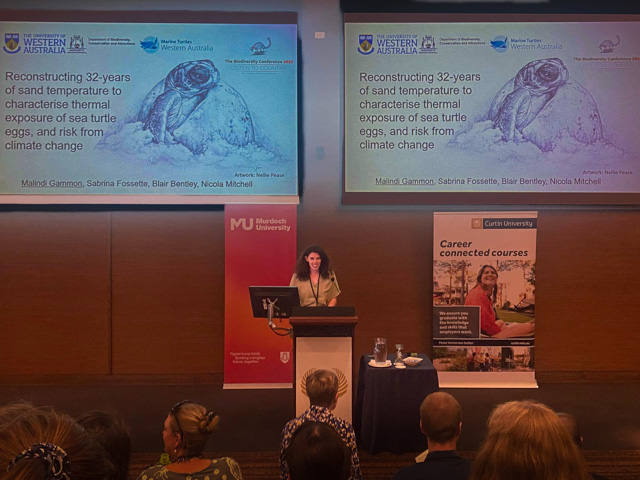Presenting at conferences
An important aspect of communicating science is presenting recently published research at scientific conferences. Research staff in the Program regularly present at conferences nationally and internationally, engaging with colleagues from around the world to further collaborations and understanding of flatback turtles. Photo - Sabrina Fossette/DBCA


Engaging with policymakers
Communicating research outcomes to policymakers effectively is a crucial part of conservation science; turning science into action. The Program does this through writing formal advice and by engaging with policymakers through participation in committees and advisory panels, presentations at events and content on social media. Photo - Shem Bisluck
Workshopping research
Inviting other scientists and stakeholders to workshop ideas and talk about research outcomes is a useful science communication tool for sharing understandings and identifying new ways of applying research. The Program engages with a wide range of stakeholders to regularly present and workshop new methods and applications. Photo - Clodagh Guildea/DBCA


Translating and transforming science
The translation of science into forms easily understood by the public results in research being used in the real world. The Program produces website content, videos, social media content, magazine articles, summary posters, infographics, postcards, banners and education resources so everyone can take part in flatback turtle science and conservation. Photo - DBCA




